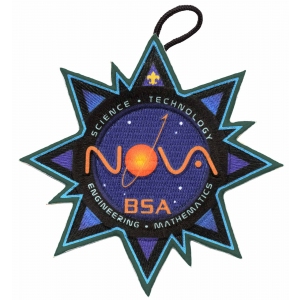From Simulations to Real Life: Modeling Bungee Jumping
This activity requires at least two people and works much better with a group of three to six people.
The scenario: The Acme Daredevil Adventure Company provides rock climbing, skydiving, extreme skiing, and cliff diving adventures to the public. To appeal to a broader market, the board decided to add bungee jumping to its list of offerings. The details of this new venture now need to be worked.
The company has several sites planned for bungee jumping, and each site has a different jump height. Your task is to simulate bungee jumping using rubber bands and an action figure (doll) to determine the ultimate length, or the number of rubber bands to be used with your action figure at any given height to guarantee a safe jump. For maximum thrills, the jump must allow your action figure to come as close to the floor as possible.
Part 1: Set-Up and Simulation
Tape a weight(s) to the doll's back so that it is heavy enough to stretch the rubber band "bungee cord." Tie one or two rubber bands (the unstretched size should be about 4 inches) to the doll's feet and drop it, headfirst, from various heights. Keep raising the jump height until the head no longer hits the floor.
Once you reach this height, perform three trials, measure the height of the drop each time, calculate the average, and calculate the maximum error between the average and the drop heights used to find that average. (Conduct a test drop several times to practice taking readings.)
Continue adding rubber bands to see what the average drop height will be for different numbers of rubber bands. Do the experiment with at least six different numbers of rubber bands. Use a tabular chart to help you organize and record your data. (You may use Excel or create your own tables.)
Scatter plots use horizontal and vertical axes on a graph to plot data points and show how much one variable (or measurable "value") is affected by another. Each variable can be represented on the scatter plot with a dot. Once the scatter plot has been filled in with a number of dots, you should be able to see how the variables are "scattered" to show a trend. To learn more about scatter plots, use your favorite search engine on the Internet (with your parent's or guardian's permission), or ask your mentor.
Part 2: Analysis and Report
- Create a scatter plot of ordered pairs of the type (number of rubber bands, average drop height). You may do this by hand or using data analysis software, such as Excel.
- Using the scatter plot you have created, determine whether the points appear to lie on or near a line. Find such a line. If your mathematics background is not yet extensive, then find such a line by "eyeballing it" and drawing it onto the scatter plot with a ruler. IOtherwise, use a graphing calculator or data analysis software of your choice to find the line of best fit for your data.
- Describe to your mentor how to use the line (graphical form or symbolic form) to make predictions. Then complete the following sentence (hypothesis): "If the height of the drop is _________________, then I predict that the number of rubber bands needed is _________________."
- Test your prediction and analyze the outcome. Determine whether the prediction matched reality, how far off the prediction was, and what errors or issues arose that may have thrown off the results of your simulation. Test and analyze three more predictions.
- Analyze the maximum errors found in your tests. Then find out the height of your favorite location (such as the Statue of Liberty, Eiffel Tower, or Golden Gate Bridge). If you drop your action figure from the top of that location, how many rubber bands would you need for a safe drop from that height? What would you expect to be the maximum error in your prediction?
- Now, consider the realities of bungee jumping with real human beings using
real bungee cords and equipment. Discuss the following with your mentor:
- The factors that need to be considered when testing this equipment to develop safety protocols
- Reliable statistics on the risk of serious injury or death while bungee jumping
- Bungee jumping is one of the high-adventure activities that is expressly not allowed by the Boy Scouts of America. What do you think of this policy?
- Create a report addressed to the Risk Management Board of the Acme Daredevil
Adventure Company. In your report, include the following:
- A description of your simulation
- Your simulation data displayed in a chart and graph
- How your data led to your ability to make predictions about safe bungee jumping heights
- The variables that might have affected your predictions Share your report with your mentor.
Source: The ideas for this activity are based on multiple versions of an activity available online titled Bungee Barbie and Kamikaze Ken. The originator of idea for this activity is unknown.
Linking the Past to the Future: Predicting Old Faithful's Next Eruption
This activity can be done individually, but works much better with three to six people.
The scenario: You have lined up a summer job as a junior park ranger at Yellowstone National Park, where you know many visitors come to see the geyser Old Faithful. Many visitors arrive just after Old Faithful has erupted and they typically ask a nearby ranger when it is next expected to erupt. Your task is to analyze past data on Old Faithful's eruptions in order to devise a strategy for predicting the next eruption.
Part 1: Data Gathering and Initial Analysis
- Gather information about geysers in general and their behavior.
- Find data on intervals (length of time) between eruptions for Old Faithful. Be aware that Old Faithful's eruption behavior has changed over the years. Use the most current data you can find. For your analysis and to test your prediction strategy, you will need information on all of the intervals for three consecutive 24-hour periods, plus intervals for the fourth consecutive 24-hour period. Each additional youth must use intervals for different days.
- Create two graphical displays of the data from three days of eruptions, analyze the patterns, and formulate your initial prediction strategy.
Part 2: Further Analysis, Refinement of Prediction Strategy, and Report
- Do the following:
- Using the data you have collected for part 1, determine how much variability you see from day to day. How much variability is there within a single 24-hour period? Is knowledge of one interval sufficient to predict the next eruption? Why or why not?
- Determine what patterns in the data are illuminated (or perhaps obscured) in the different graphical displays. Of the graphs you used, which one best illustrated the wait time pattern for Old Faithful? Would you refine your prediction strategy? If so, why and how? If not, why not?
- Use your prediction strategy to estimate all of the eruptions for the fourth 24-hour period, and compare your estimates to the actual eruption times. Calculate the differences between your estimates and the actual times. What is the maximum difference? Why are there patterns in the Old Faithful data? Is there a geological explanation?
- Create a report that describes and addresses your prediction strategy, includes your graphical displays, and explains how your graphical displays support your strategy.
- Discuss the data you have collected, your report, and what you have learned with your mentor.
Resources
- T. Scott Bryan. Geysers: What They Are and How They Work, 2nd ed. Mountain Press Publishing Company, 2005.
- William J. Fritz. Roadside Geology of the Yellowstone Country. Mountain Press Publishing Company, 1985.
For more data, visit the Geyser Observation and Study Association at www.geyserstudy.org .
A Paradox of Counting: Voting Methods and Fair Decisions
This activity can be done individually or with a group of two to six people, and requires cooperation from about 20 to 30 individuals.
The scenario: Your unit wants to plan a superactivity for next summer but cannot agree on what that activity should be. There are four options under consideration, and your unit decides to vote. Your task is to collect ballots and tabulate results using several different voting methods.
This is not a binding decision on your unit! This is an exercise, but one that will be more meaningful if you use real-life possibilities.
Part 1: Ballot Setup, Gathering, and Tabulating
- Decide on four superactivities that your unit would genuinely be interested
in doing next summer. Aim for four genuine options, none of which is likely
to receive a majority of the votes. Discuss these options with your mentor before
doing the following:
- Create ballots on which each voter can list his/her first, second, third, and fourth choices from among the four prospective superactivities.
- Find 20 to 30 unit members, prospective guests for the superactivity, unit leaders, parents, and so on, to complete one ballot each. Each voter should vote sincerely, without trying to strategize.
- Do some research and learn how to tabulate winners using each of the following
four voting methods:
- Plurality method
- Borda count method
- Plurality-with-elimination method (sometimes called the instant runoff method)
- Pair-wise comparison method (sometimes called Copeland's method)
Part 2: Analysis and Report
- As you tabulate the results using each voting method, evaluate each method
and discuss the following with your mentor.
- What do you notice? How fair is each method?
- How would the results be affected if two or three voters had cast strategic ballots (instead of sincere ballots), in an effort to "not waste their votes"?
- Which of the four voting methods do you believe is the right voting method for this decision in your unit? Why?
- Consider how we elect the president of the United States of America.
- What voting method do we use?
- What are its advantages and disadvantages?
- Do you believe each voting citizen in the United States has an equal say in the vote tabulation?
- Is it possible for citizens to cast strategic votes and influence the outcome of a presidential election?
- Create a report that summarizes the results from the various voting methods, outlines your analysis, and comments on voting methods for the U.S. presidency. Share your report with your mentor.
Resources
- Donald G. Saari. Chaotic Elections! A Mathematician Looks at Voting (for youth with stronger mathematics backgrounds). American Mathematical Society, 2001.
- William Poundstone. Gaming the Vote: Why Elections Aren't Fair (and What We Can Do About It). Hill and Wang, 2008.
Source: https://www.scouting.org/stem-nova-awards/awards/venturer-supernova-topics/









